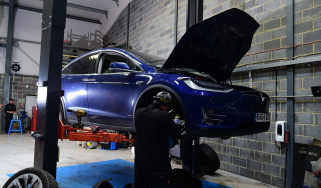Road atlas test
Many drivers still choose a road atlas over sat-nav. But which of the latest maps is the best? We put a dozen to the test...
Despite the sat-nav boom, there’s still a big market for the ‘traditional’ (and cheaper!) road atlas. What’s more, buyers have a huge choice of formats, bindings and mapping.
Electronic route finders have clearly had a major influence on the latest paper versions, as all the maps here listed fixed speed trap locations.
So which is the one to get you to your destination and keep you on the right side of the law? We road tested the newest offerings to find out.
When buying an atlas, you have a choice: A4 publications are easier to store in the car, but A3 sizes provide more detail. And remember, the lower the miles per inch figure (mpi), the more features will be included.
We wanted the atlases to be as close to sat-nav as possible, so a large scale gained points, as did town centre, urban approach and airport plans. We also looked for clear mapping of restricted motorway junctions, and checked accuracy on our M25 speed trap locator test route.
A local roundabout that changed to crossroads four years ago was used to assess how up-to-date the mapping was, and we looked for indications of planned alterations near Glasgow and Wetherby, N Yorks.
Finally, we considered value for money in terms of quality of data, plus the number and size of pages.
Verdict
The A-Z Super Scale scored well right across the board. Add in a great-value price, and it thoroughly deserves to be crowned our road atlas Best Buy for the second year in succession.
In second place is A-Z’s smaller-scale offering, while the fight for the final place on the podium was close, with the Philip’s Navigator just sneaking in front of the AA Close-Up Britain.






